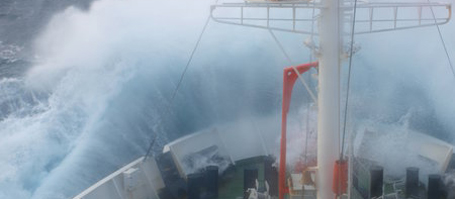Climate scientists from GEOMAR Helmholtz Centre for Ocean Research Kiel have now shown in Nature Climate Change that reliable claims on regional trends are currently not possible, because observation data from the oceans are lacking.
There are several reasons why sea level is rising. Glaciers are melting in response to warming temperatures, which at the same time seawater is expanding. The rate of current sea level rise amounts to approximately three millimeters per year. “But this is only a global average. Sea level rise significantly differs from one coast to another,” says climate scientist Prof. Dr. Mojib Latif of GEOMAR Helmholtz Centre for Ocean Research Kiel. Changes in various currents and wind circulations are to blame for these regional differences, but also the fact that temperatures on Earth are rising at differing rates. Therefore, global averages are only of limited use when it comes to planning coastal protection. In a study, published in Nature Climate Change today, a group of climate scientists from GEOMAR and the University of Isfahan (Iran) shows that a reliable prediction of regional sea level trends based on today's oceanic database is very difficult. “Our results are an appeal for more ocean measurements,” says Professor Latif, initiator of the study.
For their study, the authors used the Kiel Climate Model, which simulates the ocean, the atmosphere and the sea ice. First, they simulated a control climate of 3,000 years with the KCM. Then they chose 22 states from that control run and performed global warming simulations by increasing in each of them the concentration of carbon dioxide (CO2) at a rate of 1%/year. Thereafter, the scientists evaluated 100 year trends in sea level at each point and their regional variations.
“The change in CO2 was the same in each of the global warming simulations. Nevertheless, regionally, the sea levels evolved rather differently depending on the initial state of the ocean and the atmosphere,” explains Professor Latif, “while, as expected, the global sea level rise was virtually identical in all the 22 simulations.” In order to estimate the relative importance of the atmospheric and oceanic initial conditions, the authors started another set of 22 global warming simulations. This time, they used the same ocean state as the starting point in every run. Only the atmospheric conditions varied. "The regional variations in sea level rise were much smaller than in the first 22 simulations,” says co-author Dr. Thomas Martin of GEOMAR. However, solely due to the chaotic nature of weather some spread remained, which provides an estimate of the centennial sea level predictability limit.
Thus, the model calculations show that the state of the ocean at the beginning of a simulation has a huge impact on the regional sea level trends. “If we want to apply our calculations to the real Earth, we would need to know the state of the ocean at a particular point in time and also the history over a few decades in order to make reliable statements about the regional evolution of the sea level,” says Professor Latif, “but there is far too little historical and current data.” This is especially true for processes that occur in the deep ocean below 1800 meters. “We noticed in the model that even the state in these deep layers has an influence on later changes.” However, there are hardly any observations from these depths, explains the Kiel Climate scientist.
Thus the legitimate question of coastal protection agencies and local residents regarding how high dikes and dams have to be built at a particular coast in the course of the next 100 years will probably remain unanswered for the time being. “This is a good example of how much we depend on the oceans - and how little we know about them,” says Professor Latif.
Reference:
Bordbar, M. H., T. Martin, M. Latif, W. Park (2015): Long-term Internal Variability Effects on 21st Century Dynamic Sea Level Projections. Nature Climate Change, VOL 5, APRIL 2015 , http://dx.doi.org/10.1038/nclimate2569
Contact:
Jan Steffen (GEOMAR, Communication & Media), Tel.: (+49) 0431 600-2811, presse@geomar.de
…



